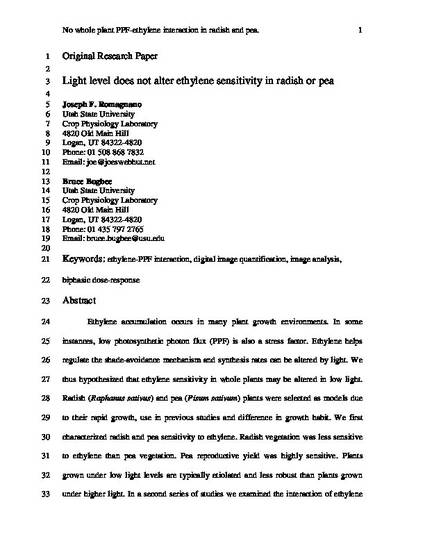
Ethylene accumulation occurs in many plant growth environments. In some instances, low photosynthetic photon flux (PPF) is also a stress factor. Ethylene helps regulate the shade-avoidance mechanism and synthesis rates can be altered by light. We thus hypothesized that ethylene sensitivity in whole plants may be altered in low light. Radish (Raphanus sativus) and pea (Pisum sativum) plants were selected as models due to their rapid growth, use in previous studies and difference in growth habit. We first characterized radish and pea sensitivity to ethylene. Radish vegetation was less sensitive to ethylene than pea vegetation. Pea reproductive yield was highly sensitive. Plants grown under low light levels are typically etiolated and less robust than plants grown under higher light. In a second series of studies we examined the interaction of ethylene No whole plant PPF-ethylene interaction in radish and pea. 2 (50 ppb pea, 200 ppb radish) with PPFs from 50 to 400 µmol m . There was no statistically significant interaction between ethylene sensitivity and PPF, indicating that high PPF does not mitigate the detrimental effects of chronic low-level ethylene exposure. This also suggests there is no crosstalk between the shade avoidance pathway and the primary ethylene signaling pathway.
Available at: http://works.bepress.com/bruce_bugbee/92/
